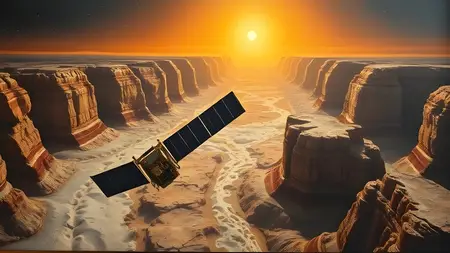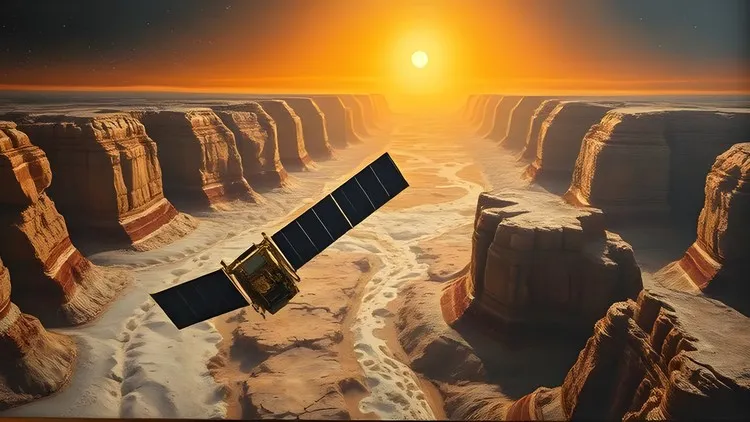Soil Salinity Monitoring Using Satellite Images and GEE
Published 7/2025
Duration: 44m | .MP4 1920x1080 30 fps(r) | AAC, 44100 Hz, 2ch | 330.47 MB
Genre: eLearning | Language: English
Published 7/2025
Duration: 44m | .MP4 1920x1080 30 fps(r) | AAC, 44100 Hz, 2ch | 330.47 MB
Genre: eLearning | Language: English
Learn how to detect and monitor soil salinity using Sentinel-2 satellite imagery and Google Earth Engine
What you'll learn
- Understand the concept of soil salinity and its environmental and agricultural impacts.
- Learn to calculate the Soil Salinity Index (SI) using Sentinel-2 spectral bands (B11 and B8).
- Develop skills to process and analyze Sentinel-2 satellite imagery within Google Earth Engine.
- Export and visualize soil salinity maps for practical use in GIS software and land management.
Requirements
- No prior experience with Google Earth Engine is required — the course will guide you step-by-step.
Description
Soil salinity poses significant challenges to agriculture and environmental sustainability, affecting soil fertility, crop yields, and land usability worldwide. Monitoring soil salinity through traditional ground surveys is time-consuming, costly, and often limited in spatial coverage. This course offers a modern, remote sensing-based approach using Sentinel-2 satellite imagery combined with the powerful Google Earth Engine (GEE) platform, enabling efficient and scalable soil salinity assessment.
You will begin by understanding the basics of soil salinity, why it matters, and how spectral signatures from satellite sensors can detect saline soils. Using Sentinel-2’s shortwave infrared (SWIR) and near-infrared (NIR) bands, you’ll learn to compute the Salinity Index (SI) — a normalized difference between bands B11 (SWIR) and B8 (NIR). The course then guides you step-by-step in accessing and filtering Sentinel-2 data, masking clouds, calculating the salinity index, and visualizing salinity distribution within your study area.
Leveraging GEE’s cloud-based JavaScript environment, you will build reproducible, automated workflows to map soil salinity efficiently over large areas without needing powerful local hardware. You’ll also learn to export your processed results as GeoTIFF files, making integration with GIS software like QGIS or ArcGIS straightforward.
By the end of this course, you’ll gain the confidence and technical expertise to monitor soil salinity at multiple scales, supporting better land management, agricultural planning, and environmental conservation using freely accessible satellite data and cutting-edge cloud computing tools.
Who this course is for:
- Students, researchers and professionals in agriculture, environmental science, geography, or remote sensing looking to apply satellite data in real-world scenarios.
More Info



